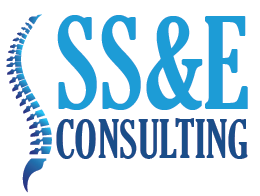Author’s Note: This event is based on a true story about a cosmetic surgeon’s attempt to stimulate prevention amongst safety professionals.
Hollywood! That thought kept rebounding back to the surgeon’s brain as he studied the graphic slides for this group of elite safety professionals.
Yes, Hollywood created legends and myths he and his fellows were seemingly forever trying to neutralize. For these color slides chronicled more than 20 years of specialized reconstructive plastic surgery on accident victims.
The doctor offered a few terse comments on the slides as he briskly moved along. Not surprisingly, no one requested he spend an abundance of time to study any of these high trauma accident cases.
Ironically, the physician thought, these slides might seem better suited to a medical class, rather than to a discipline of people who rarely glimpse destruction of human tissue. That, they try to prevent.
As the surgeon deftly finished displaying the last slide, he signaled for lights, then moved quickly to the front of the gathering. As he stood and scanned the room trying to establish eye contact with his audience, he wasn’t at all successful. All were in varying degrees of shock from the spectacle he had directed. It was time for the punch line.
Clasping his hands behind him, the master surgeon broke into the crypt-like silence: “There you have it. Some of the finest surgical repairs ever seen in one gathering. You saw before and after photographs of them. Yet most of you wonder why the ‘after’ shots look so bad. Why can’t well-practiced medical staff reconstruct someone’s face, torso, back or leg to appear nearly good as new?
Well, let me just say that humans–the wonderful creations that get injured–we surgeons cannot perfectly reconstruct. Through misinformation, the public is set to believe that plastic surgery is the answer for rebuilding, renewing and reshaping virtually anyone with any condition. These accident victims you’ve just seen are a glaring testimony to the contrary, aren’t they?
In our discussions with safety professionals, public safety officials and industry experts, we’ve become aware of a rather disturbing fact: incidents that cause injuries to people, or even near misses, occur in a line of events that by definition are called accidents. In fact, the series of events are set up nearly as deliberately as if they had been planned. As such, I propose we redirect our efforts in preventing such inexcusable human loss.
Think of my challenge as a long term, multi-generational effort to reduce the need for our professional involvements. Why not start in our own homes and in our communities to prevent accidents.
Suppose our children see a double standard in how we instruct them and actually perform ourselves. Major items like irresponsibly using a power mower or recklessly driving the van, and ‘minor’ proceedings like hammering nails without eye protection fosters like behavior. That behavior transfers eventually to workplaces everywhere.
And how many of us have actively brought public service safety training into the community? I’m not just talking about Red Cross first aid training, emergency care or swimming/lifesaving. I’m talking about educating community gatherings on subjects like poison control, family safety belt usage, recreational safety and personal protective equipment use while engaging in home projects.
Why not reach out to each segment of society we contact, simply, matter of factly–without defending or apologizing in the process. We could simply treat such training as a sensible way to conduct one’s lifestyle and livelihood.”
As the presentation closed and his participants departed, the doctor gathered his belongings and reflected on psychologists who condemned displaying human gore as an educational tool, claiming that it doesn’t work. Curious. If that were true, the planet wouldn’t have any surgeons, all supposedly incapable of learning, brain-numbed by natural human shock. He smiled to himself and wondered how many would retain the message. More importantly, how many would react? All it would take is one interested person to educate another. In turn, those two people could educate two more, and…
As he prepared to leave the room, he studied the empty chairs for a last time. What a simple concept for safety professionals like them, and surgeons like him, to teach others in their discipline how to work themselves out of a job!
Finally he made his way toward the exit, pondering the reality of a long career that awaited him.
Reprinted with Permission, © 1986, National Safety Council, Air Transport Newsletter
